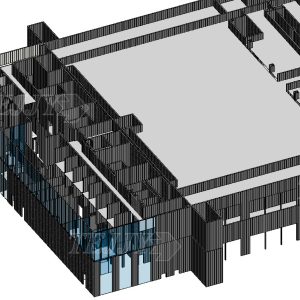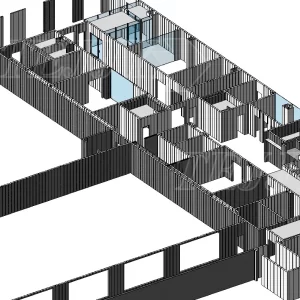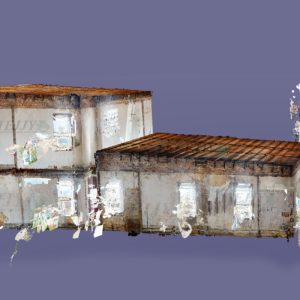Digital Twin & Geospatial-Enabled Smart Building Services

We deliver end-to-end digital twin solutions integrated with GIS mapping and geospatial analytics to provide a complete picture of your assets. Tejjy’s 3D laser scanning and Scan-to-BIM modeling services, combined with IoT, CMM, and BMS integration, create intelligent, data-rich digital twins that streamline decision-making. Our approach combines site familiarization, accurate geospatial measurements, and remote assessments to enhance facility management and asset tracking. By integrating GIS layers with the Digital Twin, we enable smarter construction, infrastructure planning, manufacturing workflows, and lifecycle management. Tejjy’s tailored solutions reduce rework, shorten schedules, and empower faster, data-driven decisions across the entire built environment.
Who we Help:
Owners& Operators, General Contractors, Architects & Engineers, Airports & Transits, Healthcare, Industrial & Manufacturing, DataCenters, Government, Water Treatment Plants.
Industries Adopting geospatial digital twin
 Manufacturing Sector – Streamline operations with intelligent Digital Twin models for production lines, equipment monitoring, and predictive maintenance.
Manufacturing Sector – Streamline operations with intelligent Digital Twin models for production lines, equipment monitoring, and predictive maintenance.  Construction and Architecture Industry – Site and construction monitoring and simulating building performance.
Construction and Architecture Industry – Site and construction monitoring and simulating building performance.  Healthcare Industry – Enhance facility management and patient safety with geospatially accurate digital representation of hospitals and medical campuses.
Healthcare Industry – Enhance facility management and patient safety with geospatially accurate digital representation of hospitals and medical campuses.  Smart Cities & Urban Planning – Integrate GIS mapping and geospatial analytics with Digital Twins for resource optimization, traffic flow simulation, and sustainable development.
Smart Cities & Urban Planning – Integrate GIS mapping and geospatial analytics with Digital Twins for resource optimization, traffic flow simulation, and sustainable development.
 Energy & Utilities – Apply geospatial-enabled replica for predictive maintenance of power plants, monitoring renewable energy assets, and optimizing grid performance.
Energy & Utilities – Apply geospatial-enabled replica for predictive maintenance of power plants, monitoring renewable energy assets, and optimizing grid performance.  Aerospace – Use Digital Replica technology to monitor aircraft performance, analyze geospatial flight data, and improve fuel efficiency.
Aerospace – Use Digital Replica technology to monitor aircraft performance, analyze geospatial flight data, and improve fuel efficiency.  Defense Sector – Develop realistic training environments with topographically accurate Digital Twin simulations for military operations.
Defense Sector – Develop realistic training environments with topographically accurate Digital Twin simulations for military operations.  Infrastructure Sector – Manage and maintain roads, highways, and bridges with GIS-powered lifecycle twin technology for enhanced safety and asset lifecycle management.
Infrastructure Sector – Manage and maintain roads, highways, and bridges with GIS-powered lifecycle twin technology for enhanced safety and asset lifecycle management.
Tejjy Digital Twin Workflow
- Discovery & Scope – We define facilities, floors, and systems while setting KPIs, integration requirements, and deliverables tailored to client goals.
- 3D Laser Scanning & Geospatial Reality Capture – Using terrestrial LiDAR, drones, and high-resolution imagery, we capture site conditions and register accurate point cloud data with real-world geospatial coordinates.
- Scan-to-BIM Modeling – Create precise LOD 400/500 Revit models aligned with control points and enriched with GIS mapping layers for location accuracy.
- Data Structuring & Asset Coding – Organize rooms, spaces, systems, and equipment attributes with COBie/IFC standards while embedding geospatial metadata for easy facility management.
- Integration & Dashboards – Connect the Digital Twin with BMS, EMS, IoT, CMMS, and GIS platforms to deliver live dashboards, predictive analytics, and asset tracking.
- QA/QC & Handover – Perform clash detection, model validation, and quality assurance, ensuring complete documentation with GIS-enabled spatial accuracy for seamless handover.

Tejjy's Digital Twins Deliverables
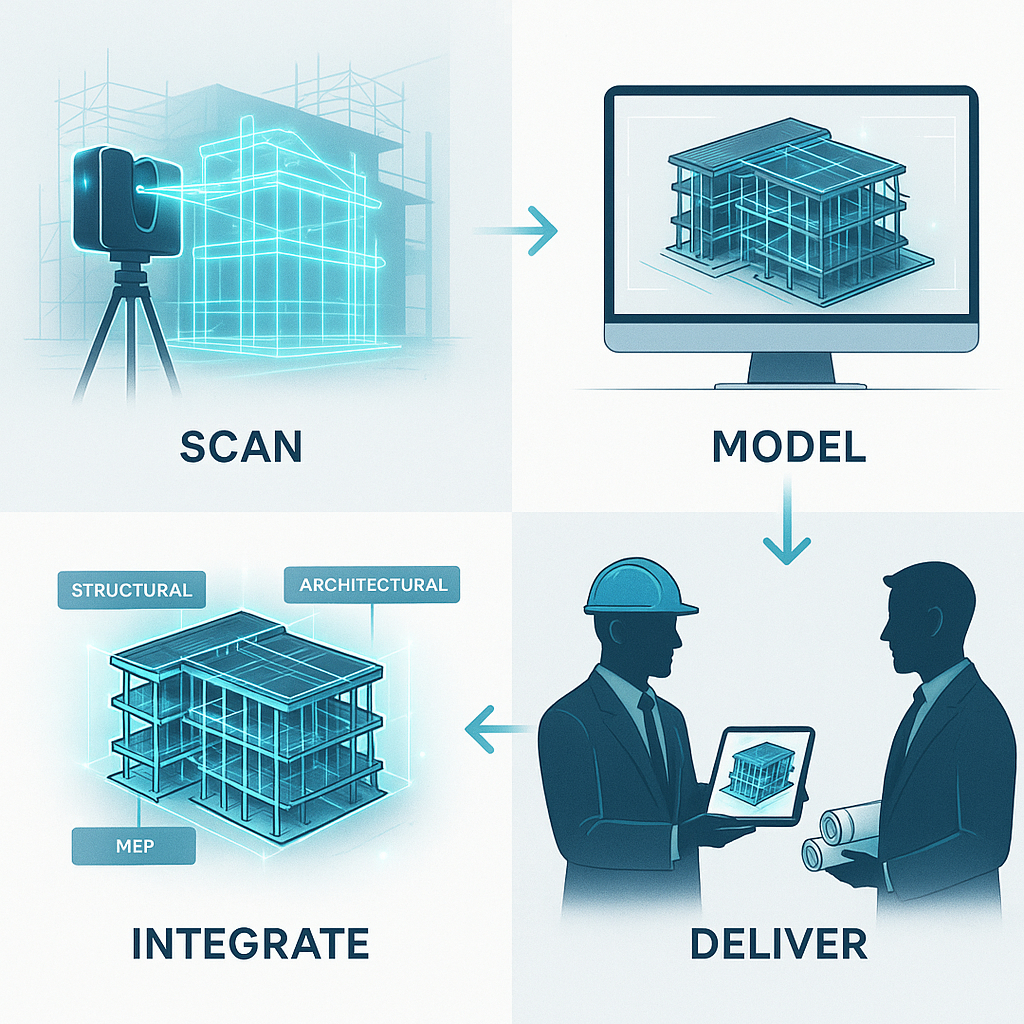
- Registered Point Clouds & Orthophotos – High-precision datasets in RCP, RCS, and E57 formats, along with georeferenced orthophotos for accurate geospatial alignment.
- Revit Models (LOD 400/500) – Comprehensive architecture, structure, and MEP models, created at advanced Levels of Development for facility operations and lifecycle planning.
- Navisworks Federated Model – Combined NWF/NWD models with predefined viewpoints and clash sets for effective coordination and conflict detection.
- IFC/COBie Exports & Asset Sheets – Open-standard deliverables supporting interoperability, asset tracking, and facility management.
- 2D As-Built Drawings – Floor plans, RCPs, MEP layouts, and fire/life safety drawings for clients who require traditional documentation alongside Digital Twins.
- Web Viewer Access – Easy-to-use cloud platforms for non-BIM stakeholders, enabling visualization of models, geospatial data layers, and project insights without software dependency.
- Owner’s Digital Twin Playbook – A customized reference guide covering workflows, naming conventions, geospatial data dictionaries, and asset management protocols.
Benefit of Digital Twin Technology For Government Infrastructure Projects
The integration of facility twin technology, Geo-intelligent mapping, and 3D laser scanning is transforming the way government buildings and public infrastructure are designed, managed, and operated. By combining spatial data infrastructure with intelligent BIM models, facility managers and stakeholders gain deeper insights into efficiency, sustainability, and asset performance. Intelligent replicas allow decision-makers to digitally simulate scenarios, test outcomes, and optimize processes before real-world execution. Key benefits of digital twin & geospatial integration in Infrastructure.
Enhanced Planning and Design:
Detailed 3D visualization through digital model helps stakeholders to visualize projects before they are built. This facilitates design validation, error detection, and conflict resolution during the planning phase
Accurate As-Built Documentation
This technology provides precise as built of a building’s layout, including architectural and structural elements. It ensures that renovations or expansions are seamlessly integrated with existing structures
Operational Efficiency
Digital twins are proactive tools, allowing stakeholders to identify operational inefficiencies, contributing to faster project delivery time and hence reduced lifecycle operational costs.
Stakeholders Collaboration
The data from 3D scans can be transformed into BIM models, which enhance collaboration among architects, engineers, and contractors. This integration allows for better project coordination and reduces the likelihood of costly errors during construction
Sustainability Initiatives:
The Federal government can adopt sustainable development by monitoring energy efficiency, reducing carbon footprint, and better resource management. Reduced carbon footprint, better resource management. Modeling for urban planning, leads to more informed decisions regarding zoning and transportation.
Predictive Maintenance
Using the real-time site monitoring and the data analytics digital twinning services for facility management enables enhanced predictive maintenance by foreseeing equipment failures, minimizing downtime, etc.
Projects
Why Choose Tejjy Inc. for Digital Twin, GIS & Geospatial Solutions?
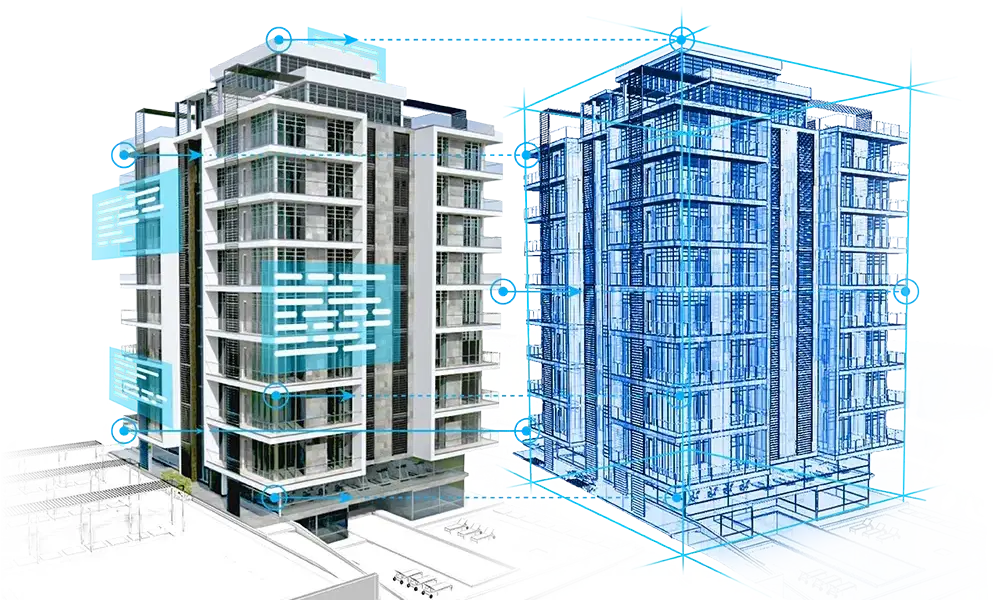
- Unmatched Accuracy – Point-cloud validated and geospatially aligned models that minimize rework and reduce costly site visits.
- Operation-Ready Data – Deliverables structured for FM, CMMS, BMS, and GIS platforms, going beyond design to support full lifecycle asset management.
- Future-Proof Standards – Consistent methodologies across multifacility and campus-level projects, ensuring scalable and sustainable data practices.
- Nationwide Reach – Skilled teams and trusted partners available across the U.S. to support projects of every size.
- Proven Experience – With 18+ years in VDC and BIM-integrated solutions, Tejjy is an 8(a)-certified firm delivering affordable yet high-quality services for AEC, infrastructure, and government projects.
Digitize your assets, optimize your future with 3D Laser Scanning and Digital Twins
With 18+ years of experience in VDC BIM integrated 3D laser scanning for AEC is affordable and yet quality-driven 8(a) certified company
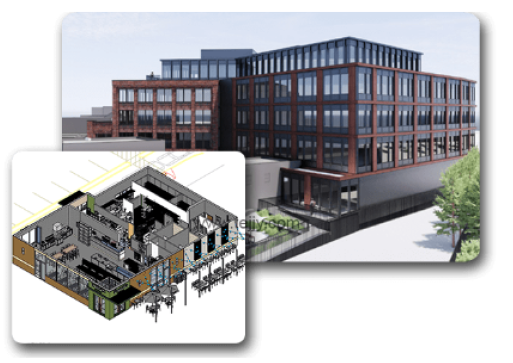
What's the difference between BIM and a Digital Twin?
Building Information Model is a rich structured model for design and construction. A digital twin connects that connects that model to live operational data, enabling monitoring, analytics and decision support post-handover.
Do I require scanning if I already have drawings?
Most as-builts diverge from reality. Scanning verifies actual conditions, reducing clashes and costly changes.
What technologies are needed to create digital twins?
Building digital twins often require compute powers, digital definition through CAD or BIM models, IoT sensors, connectivity, access to real-time and historical data.
What deliverables do facility team use day-to-day?
Dashboard for work orders, alarms and energy. Web viewers for quick space/equipment lookups. CoBie/CMMs exports.





